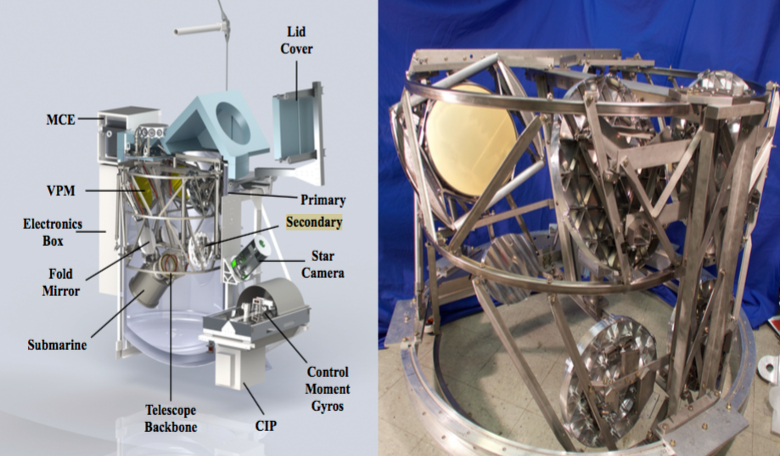The era of gravitational wave astronomy was kick started when LIGO detected these once elusive waves emanating from the merger of two enormous black holes. Now however, it is the turn of another instrument, PIPER, the Primordial Inflation Polarization ExploreR, to search the skies for the signature of primordial gravity waves, but this time, by those produced in the inflationary epoch that occurred just after the Big Bang.
Cosmological inflation is the current leading theory for the observed characteristics of the universe. One such characteristic is the afterglow of the Big Bang known as the cosmic microwave background (CMB). The CMB is the oldest light in the Universe and it is the thermal radiation left over from the time of recombination i.e when electrons and protons first stuck together to form hydrogen atoms.
The CMB is very nearly uniform in all directions, however it does contain some small irregularities or anisotropies and these match what would be expected if small thermal variations, generated by quantum fluctuations of matter, had expanded to the size of the current observable Universe. These residual variations are quite literally the seeds of the stars and galaxies that we see today.
PIPER is a balloon-borne telescope that will map 85% of the sky to look for these B-modes. PIPER consists of two identical telescopes cooled to 1.5 K within a large (3 meter tall, 3500-litre capacity) liquid helium bucket dewar and it uses a Variable-delay Polarization Modulator (VPM) to insert a time-dependent phase delay between the different polarisations to cleanly separate polarized from unpolarized radiation.
Detecting B-modes is extremely difficult and other experiments, such as those conducted at the South Pole Telescope in 2013, have tried but have so far been unsuccessful.
Space is littered with radiation emitted from all types of sources and instruments searching for B-modes need to be able to separate out interfering signals. To do this instruments need to probe large angular scales where the B-mode signal from the reionisation bump does not suffer any contamination from other signals and past experiments have been limited in the angular scale in which they can observe.
Interstellar dust is also a problem. Instruments need to be able to measure the dominant dust foreground signal with sensitivity better than Planck and PIPER is currently the only instrument capable of doing this. It's large angular scale – in this case, observing on angular scales larger than 20 degrees – will help distinguish an inflationary signal from competing foregrounds, while simultaneously providing the necessary data to measure the dust spectrum.
PIPER will have an engineering flight from Fort Sumner in Autumn/Fall of this year and shortly afterwards in Spring 2017, the telescope will start mapping a large fraction of the sky in four bands (200, 270, 350 and 600 GHz) over a series of 8 conventional balloon flights from the northern and southern hemispheres.
If PIPER is successful in detecting
gravitational waves through their unique signature in the
polarisation of the afterglow from the Big Bang, it would not only
confirm the theory of Inflation but advance our understanding of
fundamental physics and of the origin of our universe.











